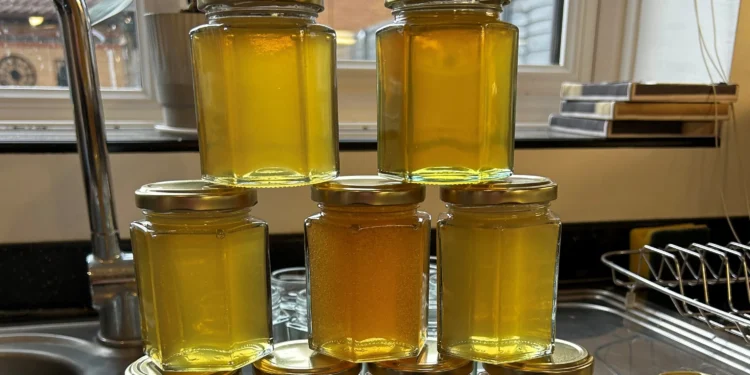As you get older the years fly by faster and faster, this last year has gone by like smoke through a keyhole.
It’s nearly 12 months since we started our journey with Simon Lawton of Bees n Business. It feels like such a short time ago that our hive was just starting out and I can’t believe that tonight is the night that we will be tasting our very first Read This Magazine honey.
We started off the evening by visiting Simon at his home so we could fully understand the process of honey extraction. If you have been following our journey you will remember that Bees N Business partners with organisations that have a strong sustainability agenda or anyone who just loves honey and wants to sponsor a hive to help Bees flourish. Simon takes care of the process for you as part of the package and you, just like us, will be able to enjoy the proceeds of this fun-filled journey.
Simon provided us with an overview of all the equipment used to extract the honey from the hive. As someone who thought that honey just dripped out I was surprised by the amount of equipment required to complete the process.
Once we had a full understanding of the steps required we set off to a familiar place. Our Bees are based in a beautiful unnamed location just outside of Helmdon. They have a fantastic spot and we give thanks to the landowners who have provided this safe, pollen and nectar filled location that provides so well for our little friends.
As always, we geared up appropriately, Simon is always keen to ensure the safety of his clients. We chose a night that was less than perfect this time around, with a storm on the horizon. The Bees knew it and were a little upset as we began to poke around in their home. They now number some 30k so there was plenty of opportunities to get stung.
There is now 2 layers in the hive with 10 frames to each layer. Every frame can hold roughly a pound of honey so the little guys had been working hard over the last 12 months.
We selected a few frames to take back to Simon’s and put the hive back to normal allowing the Bees to settle before the rain set in.
The first part of the process was to remove the cappings, which is the wax that holds the honey in place on the frames. This was performed with the de-capper, a kind of fork. These wax cappings are saved to be recycled into new frames for new hives in the future.

Once the wax cappings were removed Simon placed 2 frames into a spinner. The spinner uses centrifugal force to pull the honey from the frame and deposit it on the side and at the base of the spinner. You need to spin both sides of the frame to remove all the honey. Even after just 2 frames, there is a large quantity of honey at the bottom of the spinner.
Simon completed the process for all of our frames. To give you an idea of the effort required to produce honey it takes roughly the life of 6 bees to produce just one teaspoon full.
The honey was then filtered through a coarse sieve to remove any remaining wax cappings before it was jarred up. It tasted incredible! Your own honey just tastes better!
Simon took time to show us how he melts down the wax cappings to remove the impurities. This wax can be swapped for new frames for the next hive. This is a fine example of a circular economy.
We are now able to enjoy this process on a twice-yearly basis and are looking forward to it. Keep your eye out for the next instalment in Read This Magazine.
Each time we visit we have a brilliant time and really enjoy ourselves. We highly recommend working with Simon, he is great fun, really knowledgeable and the honey is wonderful. Visit www.beesnbusiness.com to learn more










